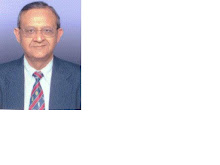Sunday, July 12, 2009
IGNORANCE IS NOT BLISS
Sunday, July 5, 2009
ECONOMIC IMPACT OF HEART DISEASE IN INDIA
ECONOMIC IMPACT OF HEART DISEASE IN INDIA
Heart disease is increasing alarmingly in India. The reason for this is the presence of risk factors and lack of awareness. Both parties lack awareness: the individual and the government.
Two of the major risk factors for heart disease are diabetes and high blood pressure. India is the current diabetes capital of the world. Approximately 32 million Indians have diabetes. By 2030, 79 million Indians are expected to have diabetes. Most patients with diabetes die of heart attacks.
In 2000, 118 million Indians had high blood pressure. By 2025, 214 million Indians are expected to have high blood pressure. They are all at risk of heart attacks.
Over 30% of patients with coronary disease (which causes heart attacks) in India are below 40 years of age. In India, the death rate from heart disease in the working age population (30-59 years) is twice as high as that in the USA. In the USA, most of those killed by heart disease are above retirement age. In India, the large number of younger people dying of heart disease is likely to have an alarming effect on the economy. In 2000, India lost more than five times as many years of economically productive life due to heart disease than the USA.
The WHO uses a term called Disability Adjusted Life Year or DALY .This means that for 1 year a person is either dead or disabled. In either case, he or she cannot work for that 1 year. DALY’s lost reflect healthy years of life lost (when the person can obviously not work or be productive). This is a better way of showing the total burden of a disease compared to the death rate. A person with heart disease may not be dead, but if he or she cannot work for a year, that is a healthy year of life lost or DALY lost due to heart disease. Heart disease causes 10% of DALY’s lost in low and middle income countries.
The WHO estimates that for the year 2002, India lost 20-29 DALY’s per 1000 population (age standardized) because of coronary heart disease. Put another way, it means that for every 1000 people in India who could have worked for a year, 20-29 people lost a year of working life or healthy life due to heart disease.
In 2006, India suffered a loss of over US $ 1 billion due to diabetes and cardiovascular diseases (affecting the heart and blood vessels).
A 2% yearly reduction in cardiovascular death rates may avoid the loss of US $ 1.64 billion over 10 years in India. To achieve this, the public, doctors and the government will have to work together.
